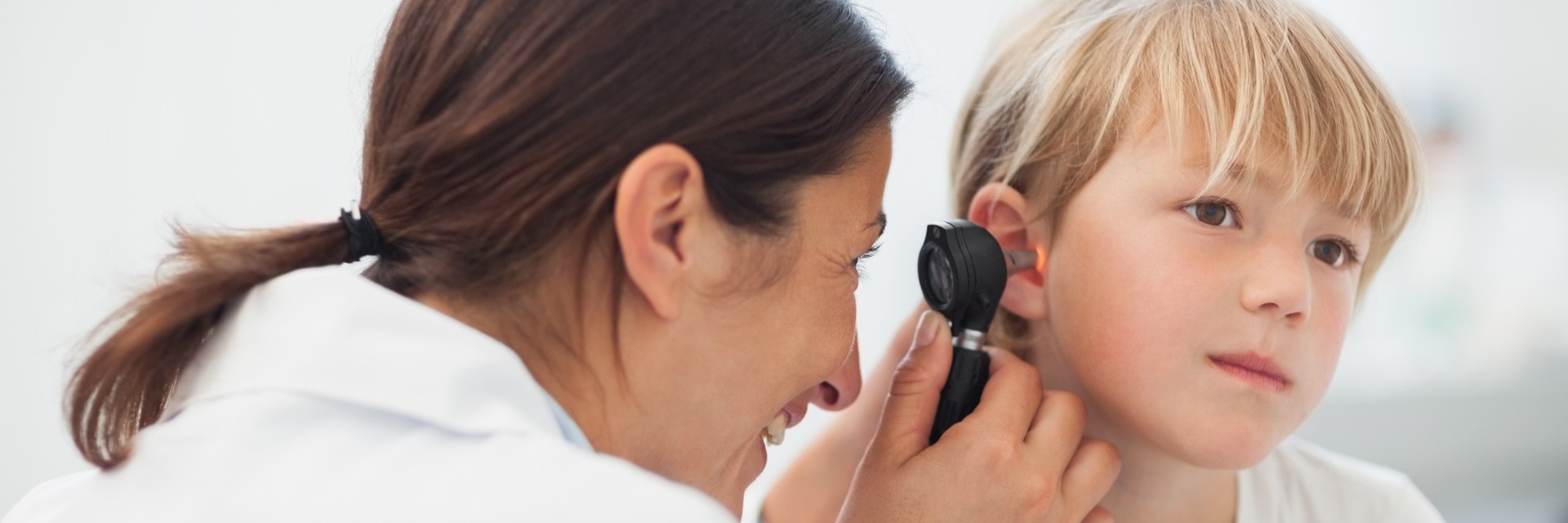What is Glue Ear
Glue ear is the build up of fluid in the air space behind the ear drum when there is no acute infection present. It is can occur following ear infections or following coughs and colds. In some cases it is not clear why it occurred. It is a very common condition in children and will almost always settle over time. The main reason for treatment is to prevent any difficulties arising whilst waiting for nature to fix the issue.
Difficulties Associated with Glue Ear
The main complaint with glue ear is hearing difficulties. This is because the little bones behind the ear drum (the ossicles) which vibrate when the ear drum moves should be vibrating in air but are now vibrating in a thick gluey fluid resulting in loss of energy. This may be noticed by school, nursery or family members. In older children the child themselves may complain, whilst in young children the first evidence of hearing loss may be apparent in concerns about speech delay.
Additionally glue ear may cause some frustration, inattention at school and behavioural issues in the child as a result of the hearing loss. Some children have a degree of clumsiness as a result and the condition itself may be associated with some discomfort in the ears.
If you have concerns about your child's hearing, it is best to have the hearing assessed. Your GP, health visitor or school can refer your child directly for a hearing assessment or this can be performed at the time as part of an ENT consultation.
Diagnosis of Glue Ear
Glue ear can be diagnosed often by looking at the ear drum and confirmed with a pressure test of the ear (tympanometry) performed at the same time as a hearing test. Different hearing tests are used dependent on the age of the child but there is always at least one method to establish the hearing level of any child.
Treatment of Glue Ear
An episode of glue ear will normally fix itself but if it does not treatment should be considered if the hearing loss is bad enough to cause problems.
In general it is recommended that after diagnosis a repeat hearing test is performed three months later to see if the hearing loss is still there. This can be a frustration for families if they feel that the hearing loss has already been present for some time. However to qualify for funding through the NHS this is a local requirement and widely adopted nationally. During the period of waiting we would recommend trialling the otovent balloon to see if this will help resolve the issue as it can in some children. Unfortunately there is no medicines that help with glue ear although many have been tried, nor is there any evidence to support the use of homeopathic treatments. It is important during this time to ensure that the school/nursery are aware of the hearing difficulties and that when talking to your child that you get their attention first and ensure that they can see your face when talking to them.
If the hearing loss persists for three months then treatment will be offered. This is either insertion of grommets or provision of some form of hearing aid to be used temporarily until the situation resolves. The advantage of grommets is that the fluid is drained and the hearing restored, the main disadvantage clearly being that it requires a general anaesthetic in children and all that that entails. Hearing aids avoid the need for surgery, the main issue being that the child only hears when using the device and there are times when this is not possible/practical such as in bed at night, doing sports activities etc. Another issue with hearing aids is that the hearing loss in this condition can fluctuate and so the hearing aid may at times be too loud or not loud enough. One way round this is to use a bone conducting hearing aid if a problem.
Useful Links
Information on funding through the NHS in mid Nottinghamshire
information on otovent balloon from company website and how to use the balloon video from Univerity Of Southamptom
hear glue ear- information on glue ear and free to download app supporting children with glue ear


